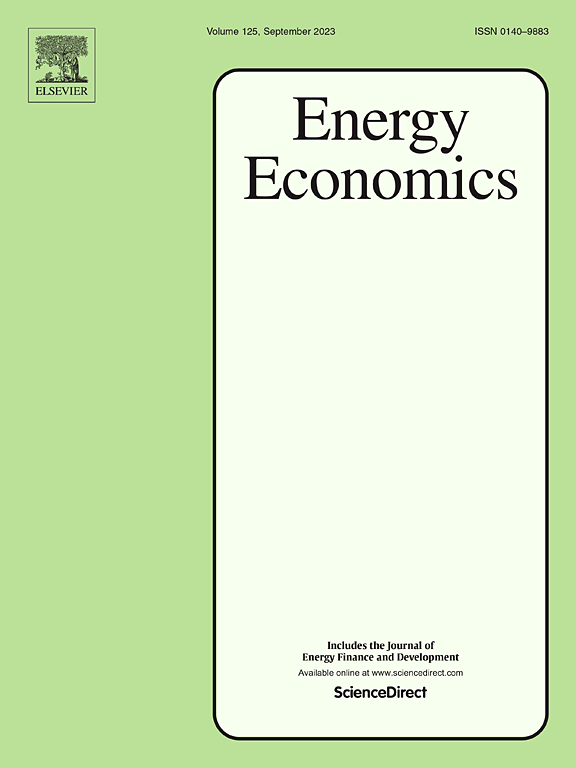Does urban agglomeration reduce carbon emissions in Chinese cities? New perspective on factor mobility
IF 14.2
2区 经济学
Q1 ECONOMICS
引用次数: 0
Abstract
Urbanization in developing countries is often associated with high carbon emissions, mainly due to substantial fossil energy consumption in cities. However, only few studies have addressed how population concentration and factor mobility within urban agglomeration can reduce carbon emissions. Using a novel perspective on factor mobility, we delve into the impact of urban agglomeration on carbon emissions using a panel dataset of 284 Chinese cities spanning from 2004 to 2022. The results obtained using the two-stage least squares method indicate that urban agglomeration has a significant impact on reducing carbon emission intensity. Specifically, for every standard deviation increase in the clustering indicators of population, freight transport, and passenger transport, the carbon emission intensity decreased by 0.257 %, 0.317 %, and 0.147 %, respectively. The carbon emission reduction effect of urban agglomeration varies considerably across resource- and nonresource-based cities as well as population-inflowing and -outflowing cities. We also discovered that urban agglomeration reduces carbon emission intensity by enhancing energy efficiency and fostering technological innovation. This study provides a fresh perspective on urban agglomeration and proposes a new pathway to achieve sustainable development goals, emphasizing the importance of accelerating factor mobility to form high-quality urban agglomeration.
城市群是否减少了中国城市的碳排放?要素流动的新视角
发展中国家的城市化往往与高碳排放有关,这主要是由于城市大量消耗化石能源。然而,关于城市群内部人口集聚和要素流动如何减少碳排放的研究却很少。本文利用2004 - 2022年中国284个城市的面板数据,运用要素流动性的新视角,深入研究了城市群对碳排放的影响。利用两阶段最小二乘法得到的结果表明,城市群对降低碳排放强度具有显著影响。其中,人口、货运和客运聚类指标每增加一个标准差,碳排放强度分别下降0.257%、0.317%和0.147%。城市群的碳减排效应在资源型和非资源型城市、人口流入型和人口外流型城市之间存在较大差异。城市群通过提高能源效率和促进技术创新来降低碳排放强度。本研究为城市群研究提供了新的视角,提出了实现可持续发展目标的新路径,强调了加快要素流动对形成高质量城市群的重要性。
本文章由计算机程序翻译,如有差异,请以英文原文为准。
求助全文
约1分钟内获得全文
求助全文
来源期刊

Energy Economics
ECONOMICS-
CiteScore
18.60
自引率
12.50%
发文量
524
期刊介绍:
Energy Economics is a field journal that focuses on energy economics and energy finance. It covers various themes including the exploitation, conversion, and use of energy, markets for energy commodities and derivatives, regulation and taxation, forecasting, environment and climate, international trade, development, and monetary policy. The journal welcomes contributions that utilize diverse methods such as experiments, surveys, econometrics, decomposition, simulation models, equilibrium models, optimization models, and analytical models. It publishes a combination of papers employing different methods to explore a wide range of topics. The journal's replication policy encourages the submission of replication studies, wherein researchers reproduce and extend the key results of original studies while explaining any differences. Energy Economics is indexed and abstracted in several databases including Environmental Abstracts, Fuel and Energy Abstracts, Social Sciences Citation Index, GEOBASE, Social & Behavioral Sciences, Journal of Economic Literature, INSPEC, and more.
 求助内容:
求助内容: 应助结果提醒方式:
应助结果提醒方式:


